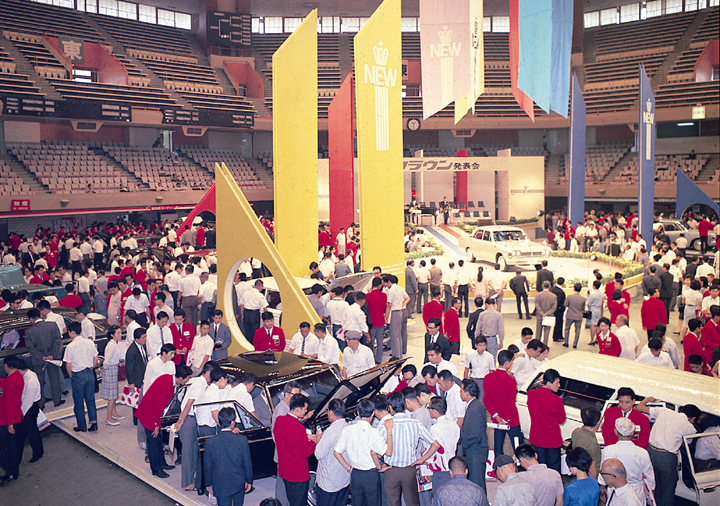Section 2. Response to Increase in Traffic Accidents
Item 3. Development of Vehicle Safety Technologies
In the latter half of the 1960s, against a backdrop of worldwide tightening of vehicle safety regulations, Toyota proactively worked to develop vehicle safety technology. Vehicle safety is broadly divided into two types-passive safety (collision safety), which aims to protect occupants during a major collision, and active safety (preventive safety), which focuses on preventing accidents.1
For passive safety, Toyota's redesigned Crown (MS50) released in September 1967 fulfilled all 20 items of the aforementioned U.S. FMVSS, such as having an energy-absorbing steering column, for vehicles exported to the United States. At the same time, Toyota introduced a range of new voluntary safety features to its Japan-market models, such as measures to prevent the steering system from being pushed into the cabin during a collision, and breakaway mirrors.
To prevent occupants from being thrown from the vehicle during a crash, the company developed a method of attaching the window panes directly to the vehicle body. This technology was adopted in the Crown model in 1971. A single-piece instrument panel with improved energy-absorbing ability was also developed jointly with partner companies, and incorporated in the Corona (RT100) and then in the Corolla and Crown models from 1973.
To improve seatbelt performance, the company developed the Emergency Locking Retractor seatbelt which allows occupants freedom of movement but which locks instantly during a crash to hold occupants in place. This seatbelt system was fitted in vehicles exported to the United States in 1973.
For active safety, the reliability of the braking system was a critical factor.
The development of Japan's expressway network increased the need to decelerate vehicles safely at high speeds, resulting in an urgent demand for disc brakes.2 Toyota began fitting disc brakes on Crown and Corolla models with sports specifications in 1965, and expanded this technology to other vehicles.
Toyota also incorporated tandem master cylinders3 in its Corona and Corolla models for sale in the United States from January 1968, and in the Corona Mark II (RT60) for sale in Japan from September that year, improving the reliability of braking system operation.
As a precursor to anti-skid systems, electronic skid control (ESC)4 was included as an option in Crown models (MS60, MS70) from February 1971 and gradually expanded to other models.
To develop vehicle safety technology and apply it to practical use, Toyota's safety related organizational structures and facilities were rapidly expanded and enhanced. In May 1966, the Safety Evaluation Section was split off from the functions of the Vehicle Maintenance Section in Engineering Department No. 2 to become a standalone unit. The following year in 1967, a crash testing facility was completed at Toyota Motor Co., Ltd.'s Head Office test course, along with an interior testing facility for vehicle safety, and in October that year an impact sled5 was introduced. Around the same time, a project general manager in charge of safety was instated in the Product Planning Department to oversee development of vehicle safety technology.6 Toyota took a range of positive steps to improve the safety of its vehicles.




